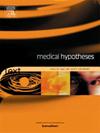MicroRNA-146a-3p as an alternative to anti-IL-6 monoclonal antibody therapy: Intra-articular liposome delivery for osteoarthritis treatment
IF 2.1
4区 医学
Q3 MEDICINE, RESEARCH & EXPERIMENTAL
引用次数: 0
Abstract
Interleukin-6 (IL-6) is a crucial inflammatory cytokine associated with chronic pain and cartilage degradation in osteoarthritis (OA). The binding of IL-6 to the IL-6 receptor (IL-6R) leads to homodimerization and the recruitment of glycoprotein 130 (gp130), subsequently activating the transcription factor signal transducer and activator of transcription 3 (STAT3) to initiate the downstream inflammatory cascade. Therefore, a therapy that targets the IL-6/IL-6R/STAT3 signaling axis shows promise for OA treatment. MicroRNAs (miRs) modulate messenger RNA in translational regulation, and dysregulation of miR-146a is noted in articular cartilage. In addition, miR-146a is also known to regulate IL-6 expression and affect OA-associated algesia. Bioinformatic analysis revealed that miR-146a-3p targets IL-6, IL-6R, gp130, and STAT3 simultaneously. Accordingly, we hypothesize that multipoint targeting the IL-6/IL-6R/STAT3 signaling axis through intra-articular injection of liposomal miR-146a-3p mimic might replace anti-IL-6 monoclonal antibody therapy and serve as a disease-modifying treatment for OA.
MicroRNA-146a-3p作为抗il -6单克隆抗体治疗的替代方案:关节内脂质体递送治疗骨关节炎
白细胞介素-6 (IL-6)是与骨关节炎(OA)慢性疼痛和软骨退化相关的重要炎症细胞因子。IL-6与IL-6受体(IL-6R)结合导致同二聚化和糖蛋白130 (gp130)的募集,随后激活转录因子信号转导和转录激活因子3 (STAT3),启动下游炎症级联反应。因此,针对IL-6/IL-6R/STAT3信号轴的治疗有望治疗OA。MicroRNAs (miRs)在翻译调控中调节信使RNA, miR-146a的失调在关节软骨中被注意到。此外,miR-146a还调节IL-6表达,影响oa相关痛觉。生物信息学分析显示miR-146a-3p同时靶向IL-6、IL-6R、gp130和STAT3。因此,我们假设,通过关节内注射脂质体miR-146a-3p模拟物,多点靶向IL-6/IL-6R/STAT3信号轴可能取代抗IL-6单克隆抗体治疗,并作为OA的一种疾病改善治疗方法。
本文章由计算机程序翻译,如有差异,请以英文原文为准。
求助全文
约1分钟内获得全文
求助全文
来源期刊

Medical hypotheses
医学-医学:研究与实验
CiteScore
10.60
自引率
2.10%
发文量
167
审稿时长
60 days
期刊介绍:
Medical Hypotheses is a forum for ideas in medicine and related biomedical sciences. It will publish interesting and important theoretical papers that foster the diversity and debate upon which the scientific process thrives. The Aims and Scope of Medical Hypotheses are no different now from what was proposed by the founder of the journal, the late Dr David Horrobin. In his introduction to the first issue of the Journal, he asks ''what sorts of papers will be published in Medical Hypotheses? and goes on to answer ''Medical Hypotheses will publish papers which describe theories, ideas which have a great deal of observational support and some hypotheses where experimental support is yet fragmentary''. (Horrobin DF, 1975 Ideas in Biomedical Science: Reasons for the foundation of Medical Hypotheses. Medical Hypotheses Volume 1, Issue 1, January-February 1975, Pages 1-2.). Medical Hypotheses was therefore launched, and still exists today, to give novel, radical new ideas and speculations in medicine open-minded consideration, opening the field to radical hypotheses which would be rejected by most conventional journals. Papers in Medical Hypotheses take a standard scientific form in terms of style, structure and referencing. The journal therefore constitutes a bridge between cutting-edge theory and the mainstream of medical and scientific communication, which ideas must eventually enter if they are to be critiqued and tested against observations.
 求助内容:
求助内容: 应助结果提醒方式:
应助结果提醒方式:


